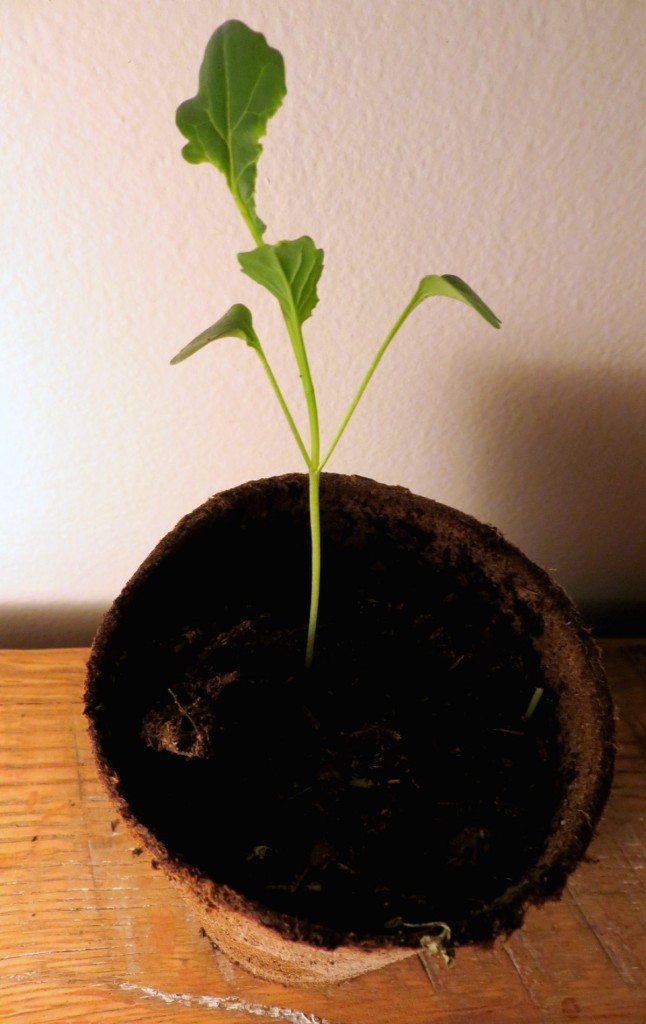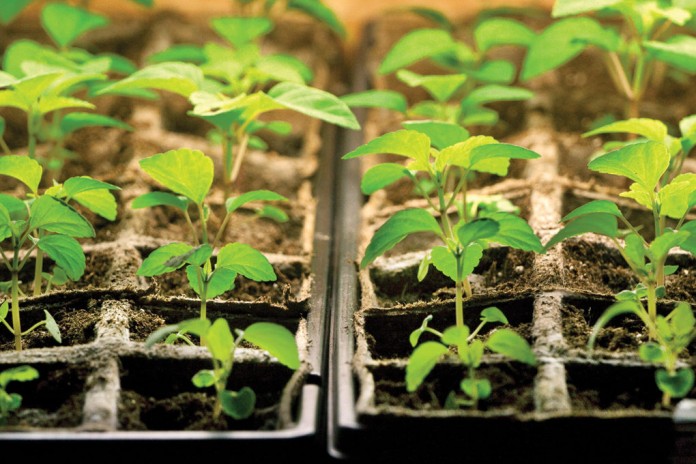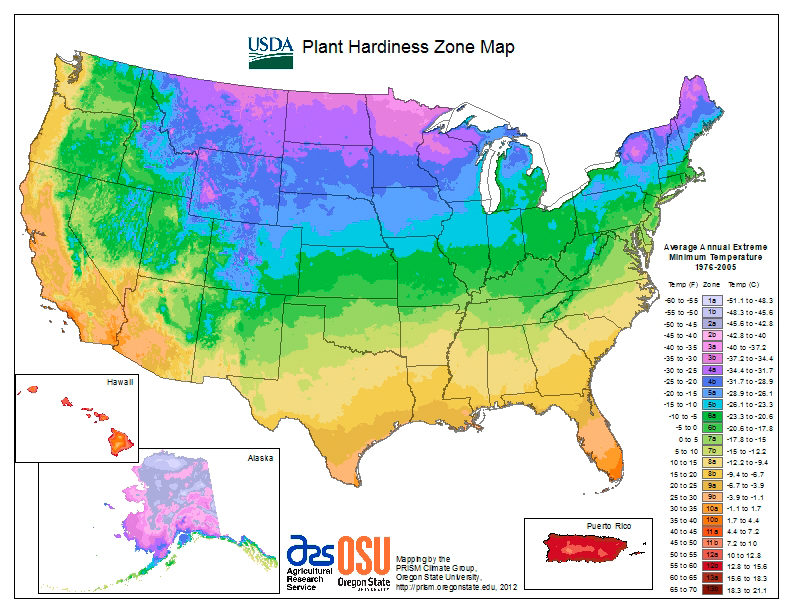Snow on the ground is not a good reason to procrastinate starting seeds. Starting seeds indoors in late February and early March ensures seedlings are strong enough to move outdoors after the last frost. By April the hardened seedlings will be raring to transplant into your garden or field.
Why start my own seeds?
Most nurseries and garden centers only offer five or six popular and proven varieties of tomatoes. If you typically buy your seedlings from a store, you may not know that there are over 2,000 tomato cultivars to choose from. My personal favorites, Amish Paste and Hillbilly, are regional heirloom tomato varieties not stocked in traditional stores. Starting my own seeds allows me to grow weird, wild and wonderful vegetables that customers love!
Related:
How do I grow vegetables indoors over winter?
Infographic: Starting seeds indoors
How to understand USDA hardiness zones
Starting seeds is much less expensive than buying seedlings. Small farmers and market gardeners find starting their own seedlings is critical to produce profits. For example, a single Cayenne pepper seedling costs $3 at the store. A packet of 25 seeds costs about the same. A 90% germination rate will produce roughly 23 home grown pepper seedlings for the same price as one store-bought pepper seedling.
Starting your own seeds allows you to choose varieties well-suited to your growing region. Last summer many of my neighbors complained when their robust tomato plants suddenly began to die from the bottom up. All of their plants were grown from store-bought seedlings. I had no problems with the tomato plants I started from seed. It’s possible my heirloom tomatoes were better-adapted to our area. Plants historically grown in a region evolve to deal with that region’s climate conditions, diseases and pests.
Grow plants appropriate to your region:
Where is the best place to buy seeds?
When I moved north of the Mason-Dixon Line, I had to give up my southern seed sources and find seeds better suited for my growing region. Seed that is grown, tested, and produced in a specific area has best germination and yield results when grown in similar conditions. Test garden and source location information is typically found within the first few pages of a seed catalog.
A seed’s rate of germination declines every year after it is packaged. Reputable seed companies only ship seed packaged for the year you purchase it. If you buy seed from a traditional store, check the seed packet for a current date.
Seeds to start indoors: BroccoliBrussels sprouts
Cabbage
Cauliflower
Eggplant
Tomatoes
Peppers
Ten steps to start seeds:
- Read seed packet for planting information, paying close attention to depth.
- Fill seed starting containers ¾ full with potting medium.
- Sow seeds at appropriate depth. Cover loosely with soil.
- Moisten with water. Keep soil damp and warm, 80 degrees F, for good germination in 5-10 days.
- After germination keep soil moist but not damp. Peat pots have a tendency to run dry. Plastic containers tend to retain water. If you see mold on container or soil surface, your soil is too wet. Water less and add a fan to increase air circulation.
- After germination reduce temperature to 70 degrees F.
- Give seedlings between 14-18 hours of light a day.
- Thin seedlings as required.
- Use diluted fertilizer or compost to feed seedlings as required.
- After the last frost, gradually harden off seedlings outdoors. Start by moving the seedlings outside on warm sunny days and gradually increase exposure. The seedlings will be ready to transplant in the garden after 2 weeks hardening.
A final note about starting seeds indoors: Garden supply centers sell mini greenhouses, hoop houses and cold frames for starting seeds. But remember that without supplemental heat, these outdoor structures are not warm enough to start seeds in early spring. In USDA hardiness zones 5 and below you will have to add an additional layer of plastic to the outside of your unheated structure, or use heated mats and warm rain barrels to increase the temperature inside.
 Additionally, you can utilize unheated space in outdoor structures to harden off seedlings. If you live in zone 5 or lower, I recommend starting seeds indoors. Simple and effective homemade grow system plans are free to download online.
Additionally, you can utilize unheated space in outdoor structures to harden off seedlings. If you live in zone 5 or lower, I recommend starting seeds indoors. Simple and effective homemade grow system plans are free to download online.
I use homemade indoor grow systems with adjustable fluorescent bulbs to start my seeds. My design is based on free plans from Cornell University. If you have strong sunlight from south facing windows, a couple of 2×8’s laid across coffee tables may be all you need to successfully start seeds.
Get a head start on the growing season by starting seeds indoors now. Tiny sprouts peeking through the soil surface will help make these last few weeks of winter bearable.












Thanks for all the great information, it’s very helpful.
These are great tips Ivory, thank you for sharing. I started seeds indoors for the first time this year. A few mishaps, but so far I’m impressed with how easy it was and how healthy my transplants look as compared to the picked-over lot I usually find in the garden (or grocery) stores. I will definitely be starting seeds indoors every year from here on out.
The best advice I have to offer is buy a potting mix with slow-release fertilizer mixed in. My seedlings in this mix rapidly outgrew the seedlings in straight peat. The more advanced gardeners probably know exactly how and when to fertilize the seedlings, but for me (a beginner) it was so much easier to not have to think about it.
Hi, we are starting a vegetable garden. It is May 18th now and have not yet even started to grow plants inside-those you mentioned in this article: broccoli, tomatoes, lettuce, peppers, celery, cucumbers, onion, peas, spinach, squash, and chard. These plants need to be started inside. Is it too late to do that now? Thanks for your time. And I enjoyed reading your informative article.
Patricia-
It is too late to start broccoli, tomatoes, peppers, celery indoors. But some of these you can buy as seedlings. Onion sets and peas prefer cooler temps, but you may still be able to get away with it. The rest (lettuces, cucumbers, squashes) can be planted directly in the soil and you’ll have a fine harvest.